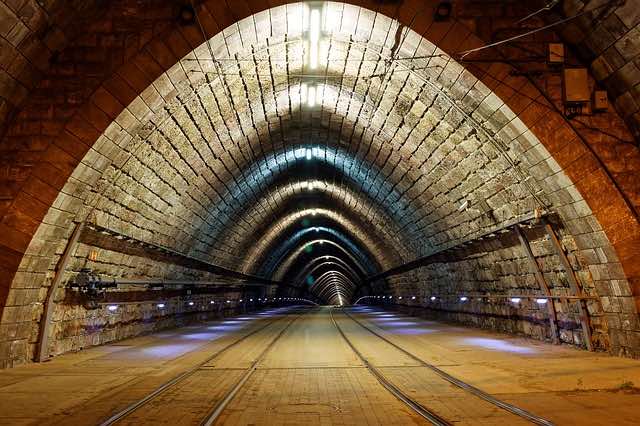The Dynamics Of Tunnel Engineering In Civil Infrastructure

If you are planning to travel through a mountain or below a river or sea, one of the best ways of achieving this is through a tunnel. Tunnels are not only used for transport purposes but also for water supply, power transmission, or simply to allow for pedestrians to walk through mountainous areas.
But how are tunnels constructed? How safe are they? What hazard should we be aware of? This post will provide you with all the information you need to know about tunnel engineering, modern tunneling methods, and tunnel hazards. So, let's dive in!
Tunnel Engineering
Tunnel engineering deals with the planning, designing, and construction of tunnels. It is a discipline that requires a deep understanding of the behavior of soil and rocks as well as the effects of the environment on tunnels. Tunnel engineers use their knowledge to ensure that tunnels are not only safe but also efficient and cost-effective. Here are the key components of tunnel engineering:
Geotechnical Investigation
Before construction begins, a thorough geotechnical investigation is carried out to determine the type of soil and rocks that the tunnel will pass through. This enables the engineers to design the tunnel with the adequate thickness and strength to withstand the weight of the soil and rocks above it. Failure to carry out an adequate geotechnical investigation can lead to a collapse of the tunnel.
Tunnel Design
After determining the type of soil and rocks, the next step is to design the tunnel. There are different types of tunnels depending on the purpose of the tunnel. Some of the most common types of tunnels include:
- The bored tunnel: This is a straight tunnel that is built by drilling a hole straight through the mountain or under the river or sea.
- The immersed tunnel: This is a tunnel that is built on the seabed, riverbed, or lakebed and is then covered with water to create a complete tunnel.
- The cut and cover tunnel: This is a tunnel that is dug using the open-cut method where a trench is dug and a roof is placed to create a tunnel.
Tunnel Construction
After designing the tunnel, the next step is to begin construction. The construction process involves digging the tunnel, installing the support structure, and lining the walls and floors of the tunnel. This can be a very dangerous process as there is a risk of cave-ins, flooding, and fire.
Tunnel Operation and Maintenance
Once the tunnel is complete, it is ready to be used. However, regular maintenance must be carried out to ensure that the tunnel remains safe. This includes routine inspection of the tunnel lining, air quality checks, and cleaning the tunnel walls and floors.
Modern Tunneling Methods
The construction industry has continually advanced, and tunneling is no exception. Modern tunneling methods have been adopted to make tunneling faster, safer, and more efficient. Some of the latest methods include:
Tunnel Boring Machines (TBM)
Tunnel Boring Machines are used to dig tunnels in areas where traditional methods are not practical. The machine uses a rotating head equipped with cutting edges to excavate the soil. TBMs can work in almost any type of ground conditions, and they are significantly faster than traditional methods.
Sprayed Concrete Lining Method
The Sprayed Concrete Lining Method (SCL) involves spraying concrete onto the tunnel lining, creating a thick and sturdy surface. Compared to traditional lining methods, SCL requires less material, and it is less labor-intensive. This method is ideal for tunnels with challenging geometries.
Ground Freezing Method
The Ground Freezing Method involves freezing the ground around the tunnel to create a stable environment. This method is useful in areas with unstable soil or when constructing tunnels in water-bearing strata.
Hazards of Tunneling
Tunneling can be a hazardous exercise. It exposes workers and the general public to several risks. Here are some of the most common tunnel hazards:
Cave-Ins
During the construction of a tunnel, a cave-in can occur, leading to serious injuries or even death. This can be prevented by properly lining the tunnel, keeping the excavation site free of debris, and providing adequate support.
Flooding
Tunnels dug in areas with a high water table are at risk of flooding. This can be prevented by proper waterproofing and ensuring that the water drainage system is functioning properly.
Hazardous Gases
Tunnels that run through contaminated sites or have machinery that generates pollutants can expose workers and the surrounding area to hazardous gases. This can be prevented by providing adequate ventilation and regular air quality checks.
Fire
A fire can quickly spread through a tunnel, causing severe damage and endangering lives. This can be prevented by enforcing strict fire safety protocols, providing adequate firefighting equipment, and having trained personnel on standby.
Conclusion
Tunnel engineering is an essential discipline that helps us travel through difficult terrains or transport essential services. By implementing modern tunneling methods and properly addressing tunnel hazards, we can make tunneling safer, faster, and more efficient.
FAQ
Q: How are tunnels built?
A: Tunnels are built by digging through mountains or under rivers or seas using various methods such as the bored tunnel, the immersed tunnel, and the cut and cover tunnel.
Q: What are the hazards of tunneling?
A: The hazards of tunneling include cave-ins, flooding, hazardous gases, and fire.
Q: How can we prevent tunnel hazards?
A: Tunnel hazards can be prevented by implementing proper safety protocols such as lining the tunnel, providing adequate ventilation, and having firefighting equipment and personnel on standby.
Q: What are some modern tunneling methods?
A: Modern tunneling methods include Tunnel Boring Machines, the Sprayed Concrete Lining Method, and the Ground Freezing Method.
Q: Why is tunnel engineering important?
A: Tunnel engineering is essential as it allows us to travel through difficult terrains or transport essential services through tunnels.

Post a Comment for "The Dynamics Of Tunnel Engineering In Civil Infrastructure"